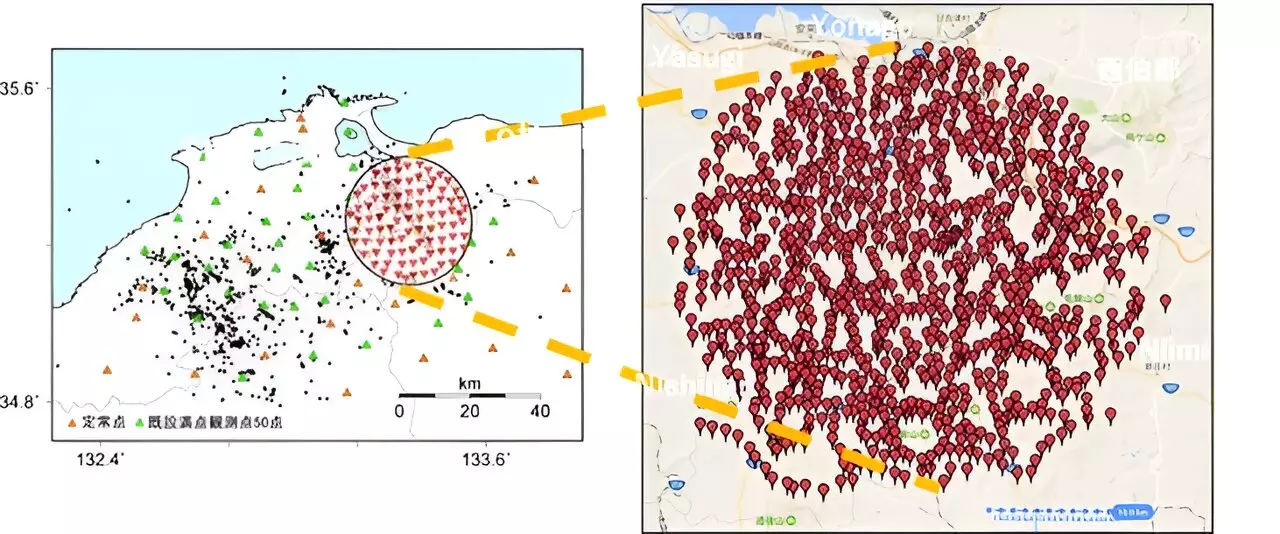Japan is situated on the Pacific Ring of Fire, a region marked by tectonic activity, making it exceedingly vulnerable to earthquakes. This geological feature not only results in thousands of minor tremors each year but also involves the persistent anxiety surrounding the next major seismic event. Although the scientific community remains unable to provide precise predictions for earthquakes, research is gradually enhancing our comprehension of the underlying processes that generate these natural disasters. Recent collaborative efforts between Kyushu University and the University of Tokyo have paved the way for deeper insights into seismic activity, emphasizing the relationship between fault strength and earthquake magnitudes.
A pivotal element within the field of seismology is the b-value, a statistical constant that articulates the correlation between the frequency and size of earthquakes. According to Professor Satoshi Matsumoto, the study’s lead author, a low b-value indicates a disproportionate prevalence of large earthquakes. Conversely, a high b-value points to a higher frequency of smaller seismic events. The b-value is not a static measurement; it fluctuates by geographical regions and can change over time, especially as a precursor to significant earthquakes. Previous research indicated that a decline in b-value often proceeds a major seismic event, attributed to growing stress loads on geological faults. However, the recent study suggests that this decline may also correlate with the inherent strength of the fault itself.
To validate their findings, the research teams meticulously examined seismic data from the epicenter of the Western Tottori Earthquake, which struck in 2000 and registered a magnitude of 7.3. They deployed over 1,000 seismic sensors throughout the region, enabling them to capture data with unprecedented precision. Even after two decades, the area continues to experience countless aftershocks, many imperceptible to human senses. The advanced sensor network allowed researchers to analyze minute fault movements and understand the orientation and structural characteristics of the faults within the Earth’s crust.
Understanding the stress field—the various pathways of stress exerted on each fault—proved crucial for characterizing the faults as either strong or weak. Matsumoto describes the influences of fault orientation, emphasizing that under particular stress regimes, some fault planes are more predisposed to slip than others. The study highlights that weak faults, oriented in unfavorable directions, tend to slip more readily, while strong faults necessitate greater stress to rupture, aligning with their characteristic directions.
The research indicates that stronger faults are associated with lower b-values, thereby elevating the probability of substantial earthquakes occurring. In contrast, weaker faults present higher b-values, implying that large seismic events are less probable in their case. This understanding unveils a crucial narrative: weak faults may rupture under lower stress conditions, thereby restricting their potential energy release during any seismic activity.
Ultimately, the research aims to distill complex fault dynamics into actionable seismic insights. While the aspiration of pinpointing precisely when an earthquake will manifest may remain elusive, the findings provide a basis for estimating when faults are nearing critical thresholds—conditions that could lead to a rupture with just a slight increase in stress.
Matsumoto’s team remains optimistic that their enhanced understanding of fault dynamics and b-values can bridge the gap toward more reliable earthquake forecasting. They acknowledge that while exact predictions may forever be out of reach, the integration of data regarding fault orientation, strength, and b-values can significantly refine estimation models. This progress marks a significant stride in a field historically characterized by uncertainty and unpredictability, inviting both hope and caution to communities vulnerable to seismic threats.
The unfolding narrative of Japan’s seismic research highlights the profound relationship between fault properties and earthquake occurrences. Such insights not only transform how scientists perceive tectonic activity but also provide the necessary groundwork for improved preparedness in facing natural disasters. As the study continues to unfold, it catalyzes a deeper conversation on the vital importance of natural disaster research in safeguarding lives and preserving communities at risk.


Leave a Reply